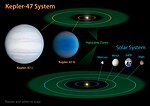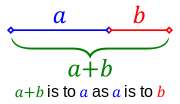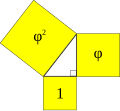Kepler-32 is an M-type main sequence star located about 1053 light years from Earth, in the constellation of Cygnus. Discovered in January 2012 by the...
8 KB (715 words) - 18:48, 3 August 2024
In astronomy, Kepler's laws of planetary motion, published by Johannes Kepler in 1609 (except the third law, and was fully published in 1619), describe...
60 KB (8,841 words) - 15:59, 14 November 2024
Kepler-16b (formally Kepler-16 (AB)-b) is a Saturn-mass exoplanet consisting of half gas and half rock and ice. It orbits a binary star, Kepler-16, with...
19 KB (1,807 words) - 05:19, 23 August 2024
Kepler-452b (sometimes quoted to be an Earth 2.0 or Earth's Cousin based on its characteristics; also known by its Kepler object of interest designation...
21 KB (1,899 words) - 00:55, 30 October 2024
Kepler-186f (also known by its Kepler object of interest designation KOI-571.05) is an Earth-sized exoplanet orbiting within the habitable zone of the...
32 KB (3,118 words) - 07:09, 9 November 2024
341 K (68 °C; 154 °F), and 305 K (32 °C; 89 °F), respectively. With a radius of 2.72 times that of Earth, Kepler-445c is likely a mini-Neptune with a...
6 KB (348 words) - 02:01, 27 September 2023
Kepler-452 is a G-type main-sequence star located about 1,810 light-years away from Earth in the Cygnus constellation. Although similar in temperature...
13 KB (1,189 words) - 08:01, 9 May 2024
List of multiplanetary systems (redirect from Kepler-55)
with the most confirmed planets are the Sun (the Solar System's star) and Kepler-90, with 8 confirmed planets each, followed by TRAPPIST-1 with 7 planets...
264 KB (8,895 words) - 01:52, 10 November 2024
zone: Kepler-560b, Kepler-705b, Kepler-1229b, Kepler-1410b, Kepler-1455b, Kepler-1544 b, Kepler-1593b, Kepler-1606b, and Kepler-1638b. The Kepler team...
186 KB (16,796 words) - 19:33, 28 October 2024
This is a partial list of exoplanets discovered by the Kepler space telescope, running from star number 1 through 500, inclusive. All lists: 1–500 501–1000...
170 KB (2,916 words) - 06:55, 29 June 2024
Kepler-90, also designated 2MASS J18574403+4918185, is a F-type star located about 2,790 light-years (855 pc) from Earth in the constellation of Draco...
19 KB (1,756 words) - 22:08, 6 November 2024
its planets. Kepler-51 has four planets, discovered between 2013 and 2024. The first planets discovered in the system were Kepler-51 b, c and d, detected...
11 KB (1,037 words) - 15:04, 4 November 2024
system via NASA's Kepler space telescope in 2012. In November 2013, evidence of a third planet orbiting between the planets b and c, Kepler-47d, was announced...
22 KB (2,132 words) - 06:23, 22 December 2023
Kepler-11, also designated as 2MASS J19482762+4154328, is a Sun-like star slightly larger than the Sun in the constellation Cygnus, located some 2,110...
18 KB (1,553 words) - 04:47, 29 August 2024
Earth's perspective, is 14.87. Therefore, Kepler-70 is too dim to be seen with the naked eye. Kepler-70 is an sdB (B-type subdwarf) star with a temperature...
12 KB (1,094 words) - 18:13, 23 August 2024
Kepler-47b (also known as Kepler-47 (AB) b and by its Kepler Object of Interest designation KOI-3154.01) is an exoplanet orbiting the binary star system...
9 KB (749 words) - 08:45, 10 April 2024
Kepler-186 is a main-sequence M1-type dwarf star, located 177.5 parsecs (579 light years) away in the constellation of Cygnus. The star is slightly cooler...
17 KB (1,540 words) - 03:22, 3 November 2024
Kepler-16 is an eclipsing binary star system in the constellation of Cygnus that was targeted by the Kepler spacecraft. Both stars are smaller than the...
9 KB (489 words) - 10:30, 9 May 2024
Kepler-1625b I is a possible moon of exoplanet Kepler-1625b, which may be the first exomoon ever discovered (pending confirmation), and was first indicated...
7 KB (602 words) - 20:19, 2 November 2024
Kepler-61b (also known by its Kepler Object of Interest designation KOI-1361.01) is a super-Earth exoplanet orbiting within parts of the habitable zone...
9 KB (982 words) - 05:23, 22 December 2023
more than twice as dense (about 12.6 g cm−3) as the innermost exoplanet Kepler-107 b (about 5.3 g cm−3). Vallenari, A.; et al. (Gaia collaboration) (2023)...
7 KB (462 words) - 15:28, 26 October 2024
Kepler-432b (also known by its Kepler Object of Interest designation KOI-1299.01) is a hot super-Jupiter (or "warm" super-Jupiter) exoplanet orbiting...
9 KB (880 words) - 12:04, 3 November 2024
Page: Kepler-296 f". NASA Exoplanet Archive. NASA Exoplanet Science Institute. Retrieved 4 June 2016. "Confirmed Planet Overview Page: Kepler-452 b". NASA...
59 KB (3,204 words) - 17:13, 14 November 2024
Kepler-440b (also known by its Kepler Object of Interest designation KOI-4087.01) is a confirmed super-Earth exoplanet orbiting within the habitable zone...
6 KB (341 words) - 04:20, 22 December 2023
01 & .02, were confirmed in 2014 as Kepler-385 b & c, and a third, KOI-2433.03, was confirmed in 2020 as Kepler-385 d. These confirmations were part...
7 KB (471 words) - 19:30, 20 September 2024
Golden ratio (redirect from A+b is to a as a is to b)
University of Tübingen in a letter to Kepler, his former student. The same year, Kepler wrote to Maestlin of the Kepler triangle, which combines the golden...
113 KB (12,929 words) - 13:34, 14 November 2024
Kepler-1649c is an Earth-sized exoplanet, likely rocky, orbiting within the habitable zone of the red dwarf star Kepler-1649, the outermost planet of...
10 KB (885 words) - 21:09, 14 January 2024
Kepler-1708b (previously known as KIC 7906827.01) is a Jupiter-sized exoplanet orbiting the Sun-like star Kepler-1708, located in the constellation of...
14 KB (1,222 words) - 20:25, 2 November 2024
Kepler-22 is a Sun-like star in the northern constellation of Cygnus, the swan, that is orbited by 1 planet found to be unequivocally within the star's...
10 KB (659 words) - 21:55, 24 August 2024
A Kepler triangle is a special right triangle with edge lengths in geometric progression. The ratio of the progression is φ {\displaystyle {\sqrt {\varphi...
18 KB (2,047 words) - 22:57, 4 October 2024

















